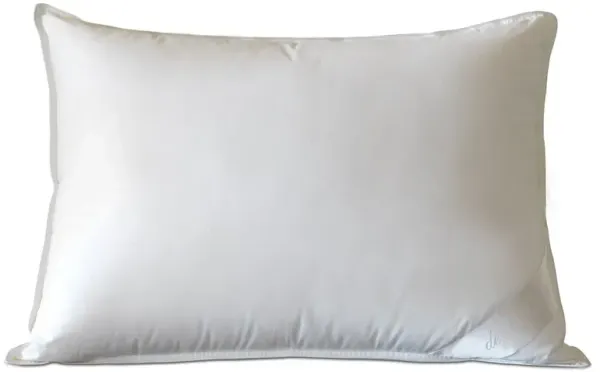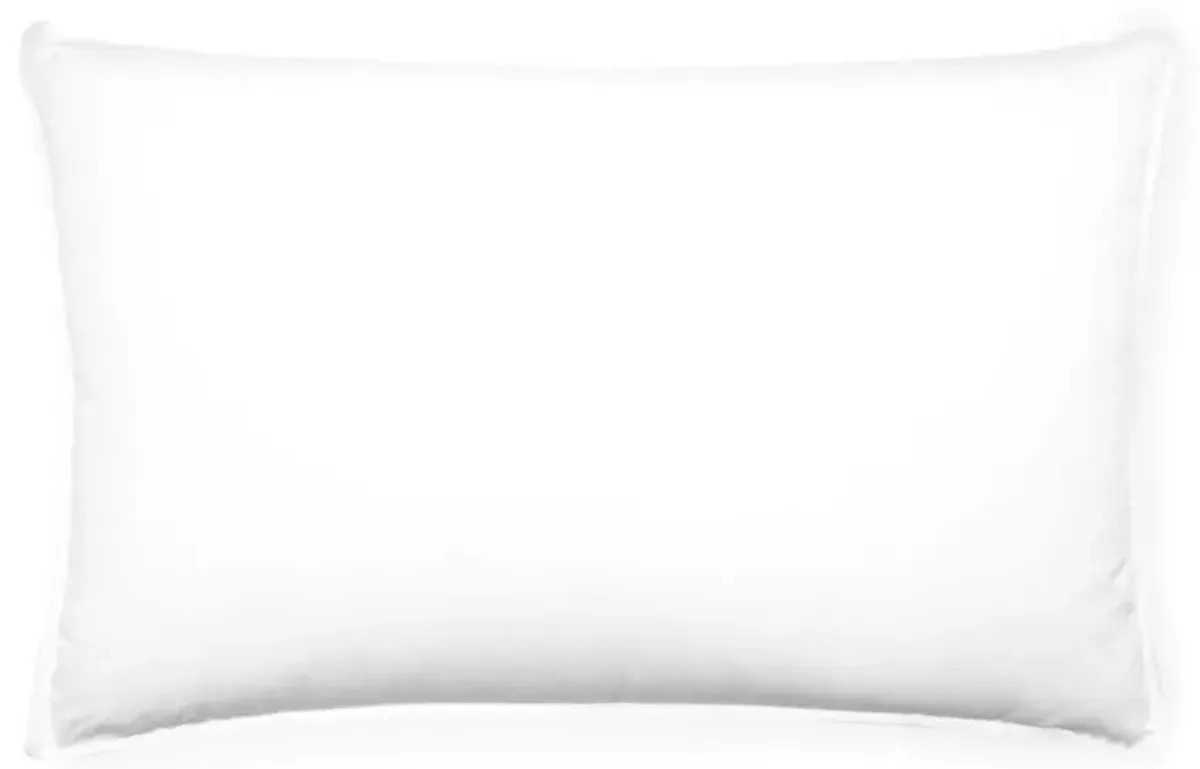Although it supports only a small part of your body, the right pillow is a key element to achieving better sleep. Doing your research is well worth the payoff since your choice can affect neck pain, snoring, and more. Find the right one for your sleeping style.
Key Features of a Pillow
Here are some of the common terms used when discussing pillows:
Loft: Describes the height of the pillow from the mattress, ranging from low to medium to high.
Firmness: Indicates the “fluffy” factor of the pillow and how much support it will offer. Ranges from soft to medium firm to firm.
Filling: The material inside the pillow that provides the cushion and insulation.
Common Pillow Fillings
Down pillows are made from the extra-fluffy protective layer beneath goose or duck feathers. Its premium ability to cushion and insulate makes it more expensive.
Feather pillows are soft and great for insulation. It’s less costly than down but may trigger allergies and tends to flatten over time. For better longevity, look for a blend.
Alternative down pillows are made from synthetic materials that make it cheaper, hypoallergenic, and easier to wash. It mimics the feel of down but won’t last as long.
Cotton pillows are filled with natural fibers. Soft, breathable, hypoallergenic, and durable, they tend to be lower and flatter.
Polyester fiberfill pillows are soft, insulating, and easy to clean. It’s also more cost-effective because it has a shorter lifespan than other premium fibers.
Memory foam pillows are made from a dense material that conforms to your body for contoured support. Can be solid or shredded to increase its breathability.
Latex pillows are made with natural or synthetic rubber for a bouncy feel. It’s antimicrobial and resistant to dust mites but tends to be heavier and pricier.
Buckwheat pillows are filled with the hulls of buckwheat seeds making them adjustable and breathable. It can be noisy, hard, and heavy.
Woolpillows are more expensive options that are warm and moisture-wicking. They can also be hypoallergenic, antimicrobial, and resistant to mold.
Choose the Right Pillow for Your Sleeping Position
Here are some general recommendations for pillow loft and firmness that correspond to your default sleep position:
Side Sleepers: High loft with medium firmness to fill the gap between the head and the shoulder.
Stomach Sleepers: Low loft and soft firmness to maintain a straight spine and avoid straining the neck.
Back Sleepers: Medium loft and firmness to support the natural curve of the neck and keep your head in place.
Combination Sleepers: As a starting point, choose a pillow for the position you’re in when you initially fall asleep. You may need to experiment with blends, lofts, and firmness to pinpoint your perfect pillow.
Other factors to consider are the feel, weight, temperature, filling, and quality of your pillow.
How To Clean and Care for Your Pillow
Use a pillowcase and a protector to keep your pillow clean and fresh.
Wash your pillow according to the manufacturer's instructions. Some pillows can be machine-washed, while others need to be dry-cleaned or spot-cleaned.
Fluff your pillow regularly to maintain its shape and loft.
Replace your pillow every 1–3 years, depending on its condition and performance. 





















